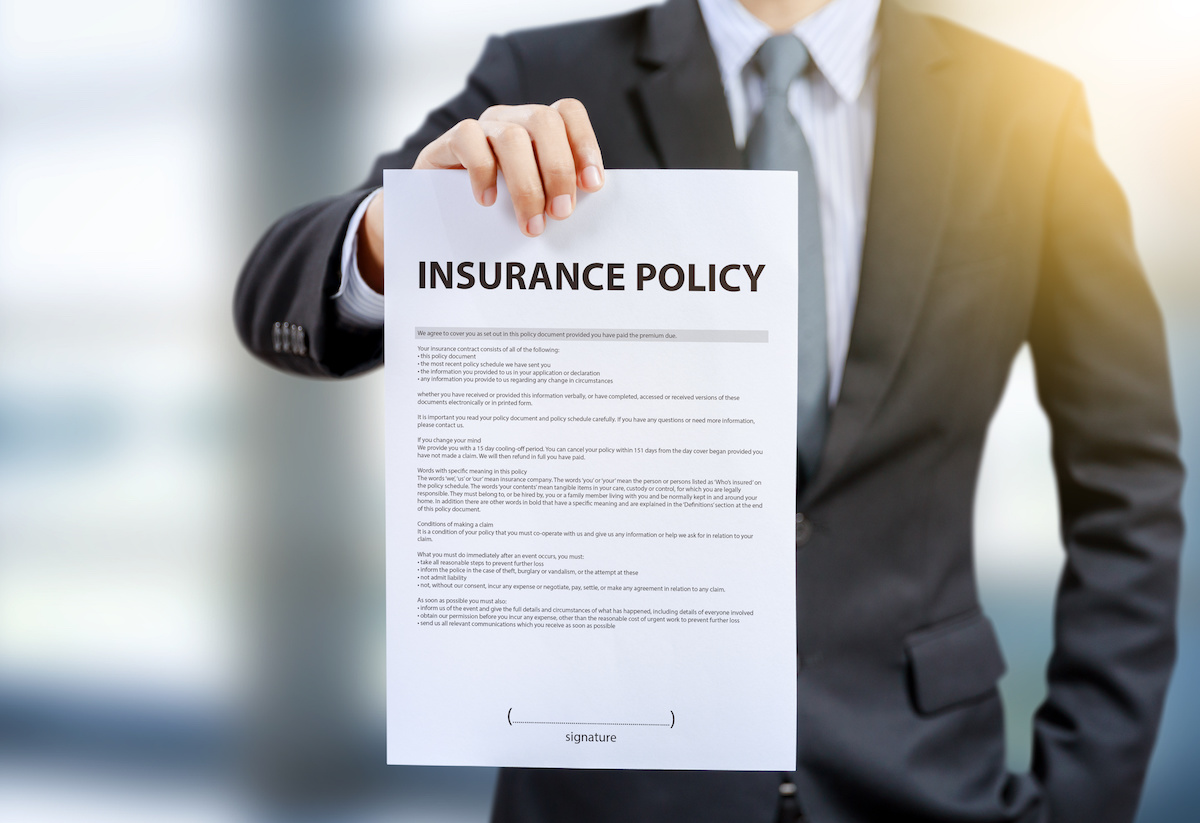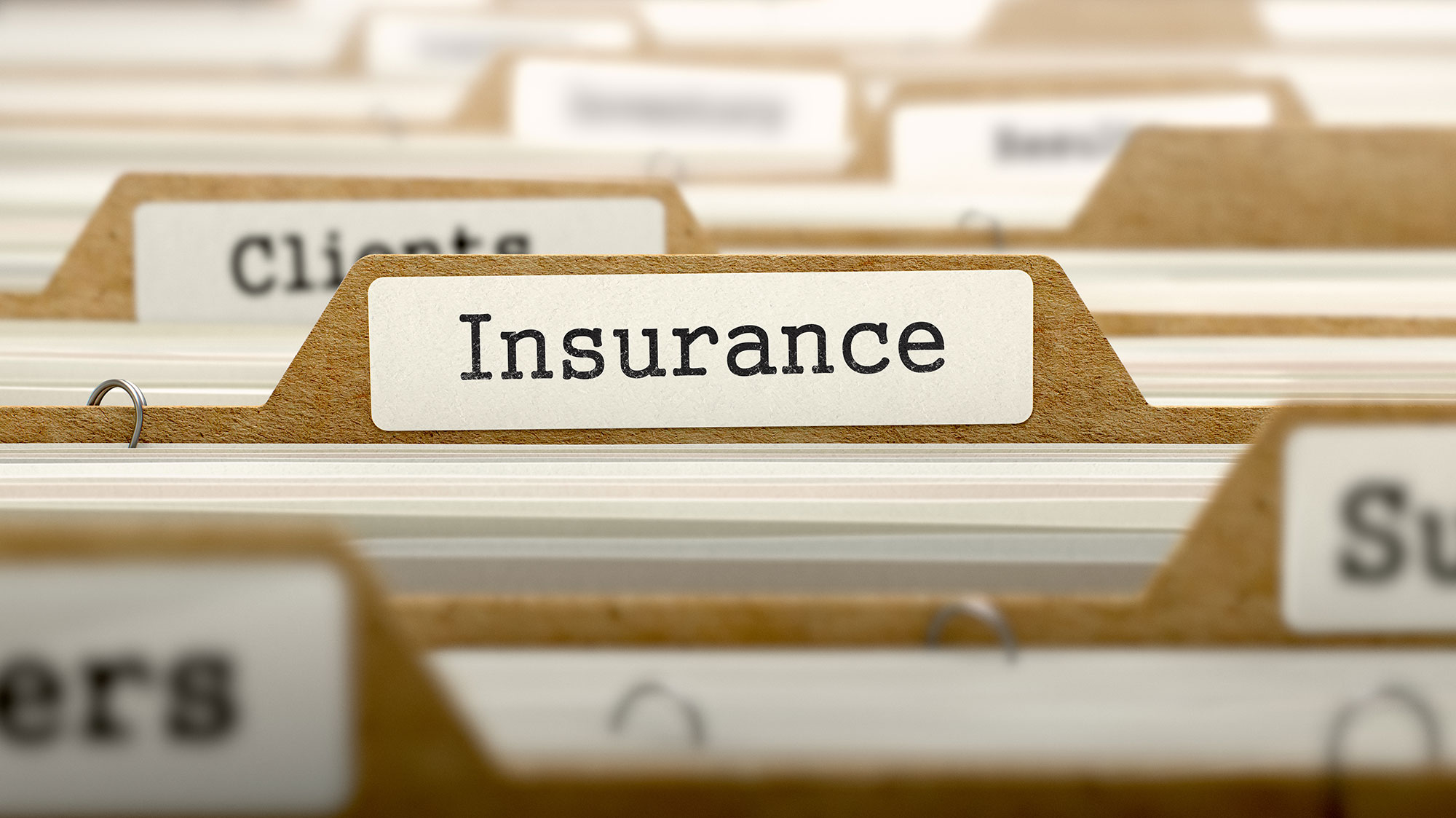Home>Finance>What Happens After The Insurance Adjuster Comes Out


Finance
What Happens After The Insurance Adjuster Comes Out
Modified: December 30, 2023
Discover what happens after the insurance adjuster evaluates your claim, understand the financial implications, and make informed decisions for your next steps in the insurance process.
(Many of the links in this article redirect to a specific reviewed product. Your purchase of these products through affiliate links helps to generate commission for LiveWell, at no extra cost. Learn more)
Table of Contents
Introduction
When it comes to filing an insurance claim, understanding the process can be overwhelming. One crucial step in the process is when the insurance adjuster comes out to assess the damage. This visit plays a vital role in determining the amount of compensation you will receive. In this article, we will explore what happens after the insurance adjuster comes out, and how it impacts the outcome of your claim.
Dealing with property damage or loss can be a challenging and emotional experience. Having an insurance adjuster evaluate the extent of the damage is a crucial part of the claims process. Their role is to assess the situation objectively and determine the appropriate compensation based on the terms of your insurance policy. Understanding what to expect during and after the adjuster’s visit can help you navigate the claims process more effectively.
During the insurance adjuster’s visit, they will thoroughly examine the damage to your property, document the findings, and assess the value of your claim. Their primary objective is to gather all the necessary information to determine the extent of the loss and validate the claim. This evaluation includes inspecting the damaged areas, taking photographs, and collecting any supporting documents or evidence related to the incident.
What is an Insurance Adjuster?
An insurance adjuster is a professional who works on behalf of the insurance company to evaluate insurance claims. They play a crucial role in the claims process by assessing the damage or loss, determining the value of the claim, and negotiating a settlement with the policyholder. Insurance adjusters can specialize in different areas such as property, auto, or health insurance, depending on the type of claims they handle.
Insurance adjusters are typically employed by the insurance company or work as independent adjusters contracted by the insurer. Their main responsibility is to investigate the circumstances surrounding a claim and determine the extent of liability and compensation. They act as a mediator between the policyholder and the insurance company, ensuring that the claims process is fair and accurate.
When it comes to property damage claims, insurance adjusters will assess the damage to a property, such as a home, building, or vehicle. They will evaluate the cause of the damage, whether it was due to a natural disaster, accident, or other covered perils. The adjuster will inspect the property thoroughly, documenting any visible damage, and may even need to consult with experts, such as contractors or engineers, to evaluate the extent of the damage.
The role of an insurance adjuster extends beyond just assessing the damage. They are responsible for reviewing the insurance policy to understand the coverage and exclusions. They will also investigate the circumstances surrounding the claim, including gathering witness statements, reviewing police reports, and obtaining any necessary medical records or documentation related to the incident.
Once the insurance adjuster has completed their evaluation, they will use their expertise to determine the value of the claim. This involves estimating the cost of repairs or replacement, considering factors such as depreciation and market value. They will also consider any additional expenses or losses incurred due to the incident, such as temporary housing or loss of income.
The Purpose of an Insurance Adjuster’s Visit
When an insurance adjuster visits your property, their primary objective is to assess the damage, investigate the circumstances surrounding the claim, and gather all the necessary information to determine the value of your claim. Their visit serves several essential purposes in the claims process.
First and foremost, the adjuster’s visit allows them to physically inspect the damage to your property. They will examine the affected areas, take photographs, and make notes of any visible damage. This step is crucial in assessing the extent of the loss and validating your claim.
During the visit, an insurance adjuster may ask you questions regarding the incident. They may inquire about the cause of the damage, any relevant details surrounding the incident, and any steps you have taken to mitigate further loss. Answering these questions honestly and providing accurate information will help the adjuster in their evaluation.
Another significant purpose of the adjuster’s visit is to gather any necessary supporting documentation or evidence related to the claim. This may include obtaining police reports, medical records, or invoices for repairs or replacements. They will collect all relevant information to substantiate the validity and value of your claim.
The insurance adjuster’s visit is also an opportunity for them to review your insurance policy and ensure that the damage or loss is covered under the terms of your policy. They will verify the policy details, including coverage limits, deductibles, and any exclusions that may affect your claim. Understanding your policy and its coverage is essential for both you and the adjuster during their assessment.
Additionally, the adjuster’s visit allows for a direct dialogue between you and the insurance company. You can express any concerns or questions you may have regarding the claims process or your coverage. The adjuster can provide clarification and guidance on the next steps in the process.
Ultimately, the purpose of an insurance adjuster’s visit is to gather all the necessary information and evaluate the value of your claim objectively. They play a pivotal role in helping the insurance company determine the appropriate compensation you are entitled to under your policy. By thoroughly assessing the damage and investigating the circumstances surrounding the claim, the adjuster can ensure a fair and accurate resolution to your claim.
Documenting the Damage
During the insurance adjuster’s visit, a crucial task is to document the damage to your property thoroughly. This documentation plays a vital role in supporting your claim and determining the amount of compensation you may receive. The adjuster will employ various methods to ensure accurate and comprehensive documentation.
Firstly, the adjuster will visually inspect the damaged areas. They will carefully examine the extent of the damage, noting any visible signs of destruction. This includes assessing structural damage, broken items, water or fire damage, and any other relevant factors specific to the type of claim.
To supplement the visual inspection, the adjuster will take photographs. These images serve as concrete evidence of the damage and can be used to support your claim. The adjuster will document both the overall state of the property and close-up shots of the damage in order to provide a clear visual representation.
In addition to photographs, the adjuster may also take videos to capture the extent of the damage. Videos can provide a more comprehensive view of the property and can help convey the magnitude of the loss. By capturing the damage from different angles, the adjuster can ensure that no crucial details are missed.
Alongside visual documentation, the adjuster may also use measurements and diagrams to accurately record the dimensions and layout of the damaged areas. This information is important for determining repair or replacement costs, especially for structural damage or large-scale losses.
In some cases, the adjuster may need to consult with experts such as contractors, electricians, or engineers. These professionals can provide valuable insights and assessments regarding the damage and necessary repairs. Their expertise can help ensure that all aspects of the claim are accurately evaluated.
Lastly, the adjuster will gather any additional supporting documents related to the damage. This may include invoices or receipts for repairs or replacements, estimates from contractors, medical bills for injuries sustained due to the incident, or other relevant paperwork. These documents are essential in validating the extent of the loss and determining the value of the claim.
By documenting the damage thoroughly, the insurance adjuster can accurately assess the extent of your loss and evaluate the value of your claim. It is important to cooperate with the adjuster during this process by providing them with access to the damaged areas and any supporting documents they may need. This will help ensure a fair and accurate resolution to your claim.
Assessing the Value of the Claim
Once the insurance adjuster has thoroughly documented the damage to your property, their next crucial task is to assess the value of your claim. Assessing the value of a claim involves evaluating various factors, including the extent of the damage, the cost of repairs or replacements, and any additional losses or expenses incurred due to the incident.
The adjuster will consider the nature and severity of the damage when assessing the value of your claim. They will examine the scope of the destruction and determine the necessary repairs or replacements. For example, in the case of property damage claims, they will factor in the cost of materials and labor required to restore the property to its pre-loss condition.
In addition to the actual repair or replacement costs, the adjuster will also consider depreciation. Depreciation accounts for the wear and tear of the damaged items over time. It takes into account the age, condition, and expected lifespan of the item to calculate its reduced value. The adjuster will consider depreciation when determining the compensation for damaged items.
Another factor that the adjuster will assess is any additional losses or expenses incurred as a result of the incident. This may include costs for temporary housing if your property is uninhabitable, expenses for renting equipment or furniture, or loss of income if the damage prevents you from working. These additional losses are taken into consideration when evaluating the overall value of your claim.
When assessing the value of your claim, the adjuster will also review your insurance policy. They will verify the coverage limits, deductibles, and any applicable endorsements or riders that may affect the claim. Understanding the specific terms and conditions of your policy is crucial in determining the value of your claim.
During the assessment process, the adjuster may refer to pricing databases, such as industry-standard cost estimating software or market research, to determine the reasonable and customary costs for repairs or replacements. These resources help ensure that the compensation offered aligns with the prevailing market rates.
Lastly, negotiation may play a role in determining the final value of your claim. The adjuster may work with you to determine a fair settlement based on their evaluation and the policy’s terms. Negotiations may involve discussing the scope of repairs, the value placed on damaged items, or any additional losses and expenses incurred. The goal is to reach a mutually agreed-upon amount that provides adequate compensation for your loss.
By carefully assessing the value of your claim, the insurance adjuster can determine the appropriate compensation you are entitled to under your policy. It is important to provide the adjuster with any necessary information or documentation that can support the assessment and ensure a fair resolution to your claim.
Negotiating the Settlement
After the insurance adjuster has assessed the value of your claim, the next step in the process is negotiating a settlement. Negotiating a settlement involves reaching an agreement between you, as the policyholder, and the insurance company regarding the compensation you will receive for your damages. This process can be collaborative, with both parties working towards a fair resolution.
During the negotiation phase, the adjuster will present their assessment of the claim’s value based on the information gathered during their visit. They will consider the extent of the damage, the cost of repairs or replacements, and any additional losses or expenses incurred. The adjuster will also take into account the coverage limits and deductibles outlined in your insurance policy.
As the policyholder, it is essential for you to be actively involved in the negotiation process. You can provide any additional information or supporting documentation that strengthens your case. This may include obtaining independent estimates for repairs, presenting evidence of the item’s value, or providing documentation on any additional losses or expenses incurred.
During negotiations, it’s crucial to remain professional and maintain open lines of communication. Both parties should be willing to listen to each other’s perspectives and engage in a constructive dialogue. If there is a disagreement regarding the value of the claim or any other aspects, it is essential to clearly articulate your position and provide evidence to support it.
The adjuster may need to consult with their team or superiors to discuss the settlement offer and address any concerns or questions. They will consider the policy language, applicable laws, and company guidelines to ensure a fair and just resolution.
It is important to note that while the adjuster represents the insurance company’s interests, they are still responsible for handling your claim in good faith. They are required to act ethically and professionally throughout the negotiation process. If you feel that the adjuster is not providing a fair settlement offer, you have the right to express your concerns and escalate the matter if necessary.
Ultimately, the goal of negotiation is to reach a mutually beneficial settlement that provides adequate compensation for your damages. This may involve compromises from both sides. Once an agreement is reached, it is essential to document the settlement terms in writing for clarity and to avoid any potential disputes in the future.
Remember, negotiation is a normal part of the claims process. By actively participating in the negotiation process and advocating for your rights, you can work towards achieving a fair and satisfactory resolution to your claim.
Timeframe for Resolution
Understanding the timeframe for the resolution of your insurance claim is important for managing expectations and planning accordingly. While the exact timeline can vary depending on various factors, there are certain general considerations to keep in mind.
Initially, after the insurance adjuster visits your property and assesses the damage, they will typically need time to review the information, documentation, and estimates gathered during their evaluation. This review process may take anywhere from a few days to a couple of weeks, depending on the complexity of the claim.
Once the assessment review is complete, the adjuster will provide you with their settlement offer. This offer will outline the amount they believe is fair compensation for the damages, taking into account policy terms, coverage limits, and deductibles. You, as the policyholder, will then have the opportunity to review the offer and negotiate if needed.
The negotiation period can vary depending on the complexity of the claim and the extent of the disagreement between you and the insurance company. Negotiations can take several days or even weeks, especially if additional documentation or information needs to be gathered or if there are differing opinions on the value of the claim.
Once a settlement agreement is reached, it is common for the insurance company to provide the payment promptly. However, the timing of the actual payout can still depend on various factors, such as internal processing times and any necessary approval processes within the insurance company. In general, you can expect to receive the payment within a few days to a few weeks after reaching a settlement.
It is important to note that certain factors can extend the timeframe for claim resolution. For example, if there are disputes regarding liability, additional investigations may be required, which can prolong the process. Similarly, if there are challenges in obtaining necessary documentation or information, it may further delay the resolution of the claim.
In some cases, if the claim is particularly complex or involves significant losses, it may be necessary to involve specialized professionals or experts. This can further extend the timeframe for resolution as their assessments and opinions are considered.
It is advisable to maintain open lines of communication with your insurance adjuster throughout the process to stay informed about the progress and any potential delays. By staying in touch and promptly providing any requested information or documentation, you can help facilitate a smoother and timelier resolution to your claim.
While insurance claims can take time to resolve, it is in the best interest of both the policyholder and the insurance company to reach a fair and satisfactory resolution. By understanding the general timeframe for resolution and actively participating in the process, you can work towards a successful outcome.
Finalizing the Claim
Finalizing the claim is the last step in the insurance claims process, marking the completion of your claim and the resolution of the damage or loss you experienced. This stage involves reviewing and accepting the settlement offer, signing any necessary paperwork, and receiving the compensation to which you are entitled.
Once you and the insurance adjuster have agreed upon a settlement amount, it is important to carefully review the settlement offer and accompanying documentation. This may include a release of liability, which confirms that you will not pursue any further claims related to the incident. It is crucial to make sure you understand and agree to the terms outlined in the settlement documents before signing them.
Before finalizing the claim, take the time to assess whether the settlement offer adequately covers the damages and losses you experienced. Consider whether it provides fair compensation for repairs, replacements, additional expenses, and any other applicable costs. If you have any concerns or questions, don’t hesitate to discuss them with the adjuster or seek legal advice if necessary.
Once you are satisfied with the settlement offer and have reviewed and signed the required documents, the claim can be finalized. The insurance company will then process the payment, which typically includes issuing a check or arranging a direct deposit into your designated bank account.
The timing of the payment can vary depending on internal processing times within the insurance company. In most cases, you can expect to receive the payment within a few business days to a few weeks after finalizing the claim. If there are any unforeseen delays, it is advisable to reach out to the insurance company’s claims department for clarification and updates.
After receiving the payment, it is essential to verify that it matches the agreed-upon settlement amount. Check the details of the payment, such as the settlement offer, and confirm that all the intended costs, deductions, or fees have been accounted for accurately. If you believe there are any discrepancies, contact the insurance company promptly to address the issue.
With the claim finalized and compensation received, you can use the funds to repair or replace the damaged property, cover any additional expenses incurred, or reimburse yourself for costs associated with the incident. Keep track of all expenses related to the claim and retain any receipts or documentation for future reference.
Remember that finalizing the claim does not necessarily mean that communication with the insurance company needs to end. If any issues arise later on, such as hidden damages or delayed repairs, it may be necessary to contact the insurance company to address these concerns. It is also important to follow up and provide any required documentation or information requested during the finalization process.
By carefully reviewing and finalizing the claim, you can ensure that all necessary steps have been taken to obtain the rightful compensation for your damages or losses. Take the time to thoroughly understand the settlement offer and associated documentation, and reach out to the insurance company if you have any questions or concerns.
Conclusion
Navigating the insurance claims process can be complex, but understanding what happens after the insurance adjuster comes out to assess the damage can help make the process smoother and more transparent. Their visit serves as the foundation for evaluating the value of your claim and ultimately reaching a fair settlement.
Throughout the claims process, it is important to maintain open and honest communication with the insurance adjuster. Provide them with all the necessary information, documentation, and supporting evidence to support your claim. This will ensure a thorough assessment of the damage and increase the likelihood of a fair resolution.
Documenting the damage comprehensively is crucial in validating your claim. The insurance adjuster will conduct a visual inspection, take photographs, and in some cases, consult with experts to accurately assess the extent of the damage. Be cooperative during this process and ensure that all relevant information and evidence is made available.
Assessing the value of the claim involves considering factors such as the cost of repairs or replacements, depreciation, and any additional expenses or losses incurred. Collaborating with the adjuster and presenting any information that strengthens your case can help in negotiating a fair settlement.
Negotiating the settlement is a pivotal step towards a satisfactory resolution. Actively participate in the negotiation process, express your concerns, and provide supporting documentation to support your position. Remember that negotiation is a normal part of the claims process, and reaching a mutually agreed-upon settlement requires constructive dialogue.
The timeframe for the resolution of your claim can vary depending on various factors such as the complexity of the claim, negotiations, and internal processing time within the insurance company. Stay informed, maintain communication with the adjuster, and be patient as the process unfolds.
Finalizing the claim involves carefully reviewing and accepting the settlement offer, signing necessary documents, and receiving the compensation to which you are entitled. Verify the details of the settlement, ensure that the payment matches the agreed-upon amount, and keep track of all expenses associated with the claim.
In conclusion, understanding the process after the insurance adjuster comes out is crucial for successfully navigating the insurance claims process. By cooperating with the adjuster, thoroughly documenting the damage, actively participating in the negotiation process, and ensuring a fair resolution, you can reach a satisfactory outcome for your claim.














